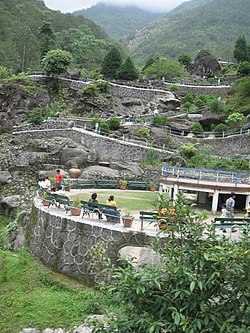The recorded history of the town starts from the early 19th century when the colonial administration under the British Raj set up a sanatorium and a military depot in the region. Subsequently, extensive tea plantations were established in the region and tea growers developed hybrids of black tea and created new fermentation
Darjeeling has several British-style private schools, which attract pupils from all over India and a few neighbouring countries. The varied culture of the town reflects its diverse demographic milieu comprising Lepcha, Khampa, Gorkha, Newar, Sherpa, Bhutia, Bengaliand other mainland Indian ethno-linguistic groups. Darjeeling, alongside its neighbouring town of Kalimpong, was the centre of the Gorkhaland social movement in the 1980s and summer 2017.
In 1577 Francis Drake set out on an expedition from England to plunder Spanish settlements in South America in search of gold and silver. In the Golden Hind he achieved this but also sailed across the Pacific Ocean in 1579, known then only to the Spanish and Portuguese. Drake eventually sailed into the East Indies and came across the Moluccas, also known as the Spice Islands and met with Sultan Babullah. In return for linen, gold and silver, a large haul of exotic spices including cloves and Nutmeg were traded – the English initially not knowing of their huge value.Drake returned to England in 1580 and became a celebrated hero; his eventual circumnavigation raised an enormous amount of money for England's coffers, and investors received a return of some 5000 per cent. Thus started what was an important element in the eastern design during the late sixteenth century.
Soon after the defeat of the Spanish Armada in 1588, the captured Spanish and Portuguese ships with their cargoes enabled English voyagers to potentially travel the globe in search of riches.London merchants presented a petition to Queen Elizabeth I for permission to sail to the Indian Ocean. The aim was to deliver a decisive blow to the Spanish and Portuguese monopoly of Far Eastern Trade.Elizabeth granted her permission and on 10 April 1591 James Lancaster in the Bonaventure with two other ships sailed from Torbay around the Cape of Good Hope to the Arabian Sea on one of the earliest English overseas Indian expeditions. Having sailed around Cape Comorin to the Malay Peninsula, they preyed on Spanish and Portuguese ships there before returning to England in 1594.



Post a Comment